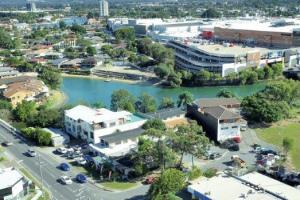From $7,000 to $30 Million:Wayne Sedawie Shares 51 Years of Real Estate Strategies to Help Buyers Build Long-Term Wealth
Veteran entrepreneur Wayne Sedawie is sharing the proven strategies,and that transformed a $7,250 land purchase in 1974 into a $30 million property portfolio
At just 20 years old, Sedawie acquired two blocks of land in quick succession. He built his first home, celebrated his 21st birthday there, and leveraged its equity to fund his next project. That early experience taught him one of the most powerful principles in real estate — equity is the engine of growth.
“Just buying a family home and waiting for prices to rise won’t get you ahead,” Sedawie says. “Wealth in property comes from vision, calculated risk-taking, and understanding how land value compounds over time.”
Over five decades, Sedawie’s holdings have expanded to include residential, commercial, and development sites across multiple states. His focus has remained consistent: identifying undervalued land, using data-driven foresight, and building long-term value through planning and patience.
Core Lessons From 51 Years in Real Estate
Land drives value: It’s the land—not the house—that appreciates.
Think ahead: Buy with rezoning, subdivision, or redevelopment in mind.
Prioritise potential: Go for the biggest block, not the flashiest home.
Verify boundaries: Always survey before settlement.
Convert rent to equity: Long-term leasing for business use is “dead money.”
Accelerate loan reduction: Banks are facilitators, not partners.
Choose premium locations: The top 10% of suburbs consistently outperform.
Build equity early: Equity creates resilience and opportunities.
Leverage expertise: Work with councillors, planners, and agents.
Start where you can: A quality apartment can be your first stepping stone.
“If you can’t afford house and land, start with a well-located unit,” Sedawie advises. “Pay it down fast, and in five to eight years, use that equity to buy again and keep the unit as bubble concept
Sedawie’s entrepreneurial mindset emerged early. At 14, while working on a farm, he took charge during a cattle escape and was rewarded with adult wages. He reinvested those funds into livestock trading, learning the basics of capital growth and reinvestment — principles that later defined his investment strategy.
Timing the Market vs. Time in the Market
“Compound growth isn’t just theory — it’s mathematics,” Sedawie explains.
His first property has averaged 9.97% annual growth over 51 years.
“There were decades when prices barely moved. That’s why you need strategy and patience, not emotion.”
Sedawie expects continued market resilience over the next 3–5 years, barring global disruptions, citing strong population growth and land scarcity as ongoing fundamentals.
The Demographic Shift Shaping Australia’s Next Property Cycle
While media attention often centres on interest rates or affordability, Sedawie believes demographics will be the next major market driver.
“Baby boomers are moving out of large homes, creating new opportunities for redevelopment and downsizing,” he says. “That will transform supply, zoning, and pricing over the next decade.”
With 25% of Australian homes now occupied by a single person — and 35% in the U.S. — Sedawie predicts councils will respond by allowing smaller lot sizes and higher-density infill, opening new possibilities for investors who understand land economics.
“Between 2030 and 2040, we’ll see one of the largest structural shifts in residential property ever recorded,” he notes.
The Next-Generation Investment Framework
Sedawie’s long-term playbook for upcoming investors includes:
Targeting large parcels near shopping centres and public transport.
Using council zoning data and professional town planners to identify growth corridors.
Acquiring older, low-density apartment blocks with redevelopment potential.
Applying business strategies to personal property management.
“Ninety percent of investors stop at one or two properties,” Sedawie observes. “But with the right strategy, anyone on a working wage can build a multi-property portfolio.”
He also encourages business owners to explore his “Bubble Concept”, which aligns commercial property ownership with business operations, creating dual income streams and asset-backed stability.
AI, Technology, and the Future of Property Value
Sedawie believes artificial intelligence and remote work will reshape property markets faster than most realise.
“Employment patterns are shifting. Some white-collar areas will stagnate as remote work expands, while tech and trade-based regions could surge,” he says. “Understanding how AI alters workforce geography will define future hotspots.”
Risk, Reality, and the Need for Multi-Income Planning
“Sedawie urges Millennials and Gen Z buyers to think twice before maxing out on lifestyle-driven mortgages. ‘When you’re leveraged to the limit, it doesn’t take much — a layoff, a medical bill, or a market dip — to knock everything off course,’ he warns. ‘Building wealth isn’t just about owning your dream home; it’s about having rental income and other income streams beyond your superannuation. One black swan event can undo a decade of hard work.’”
He cites the case of a jeweller whose business collapsed after losing vision in one eye — a reminder of why multi-income resilience is essential.
“That’s what my Bubble Concept is about — building property income streams that protect your lifestyle.”
Cautionary Tales and Lessons Learned
Sedawie recalls a grocer who rented a shopfront for $8,000 per month but declined to buy the land when offered.
“That site is now worth millions. Ownership equals control. Rent equals risk.”
He also reflects on his own setbacks:
“I lost money on two development projects due to insufficient due diligence. It was a tough education — but one that taught me the value of expert advice.”
Final Insights: Strategic, Analytical, and Grounded in Experience
“Start early. Take calculated risks. Always add value. Buy land with rezoning potential. Build equity and think like a business owner. Real estate rewards patience and long-term vision — and your best investment will always be your own judgment.”
About Wayne Sedawie
Wayne Sedawie is an Australian property investor, developer, and eCommerce entrepreneur with over 50 years of experience in real estate and business, including more than $200 million in online sales. His proprietary “Bubble Concept” integrates property ownership with business operations to create scalable, multi-source income. His latest book, Bubble Genius: Business Secrets from a Self-Made Millionaire
wayne j sedawie
Treasureauctions
+61 418 151 227
email us here
Visit us on social media:
LinkedIn
Instagram
Facebook
YouTube
TikTok
51 Years in Property: Wayne Sedawie’s Lessons from a Lifetime in Real Estate
Legal Disclaimer:
EIN Presswire provides this news content "as is" without warranty of any kind. We do not accept any responsibility or liability for the accuracy, content, images, videos, licenses, completeness, legality, or reliability of the information contained in this article. If you have any complaints or copyright issues related to this article, kindly contact the author above.



